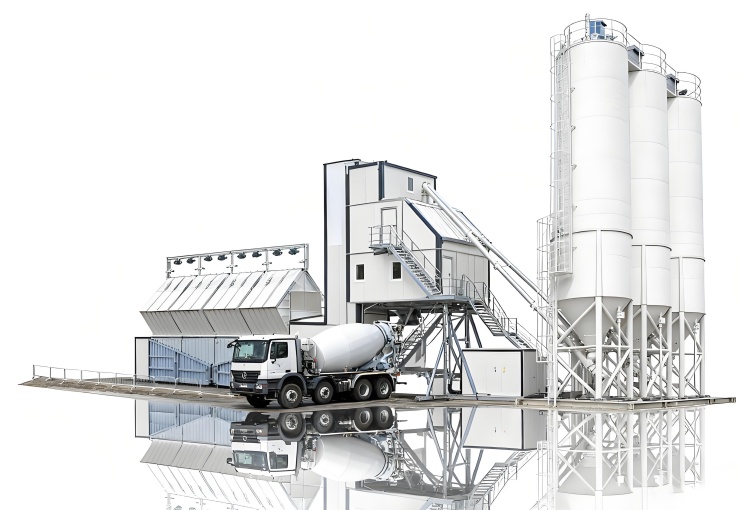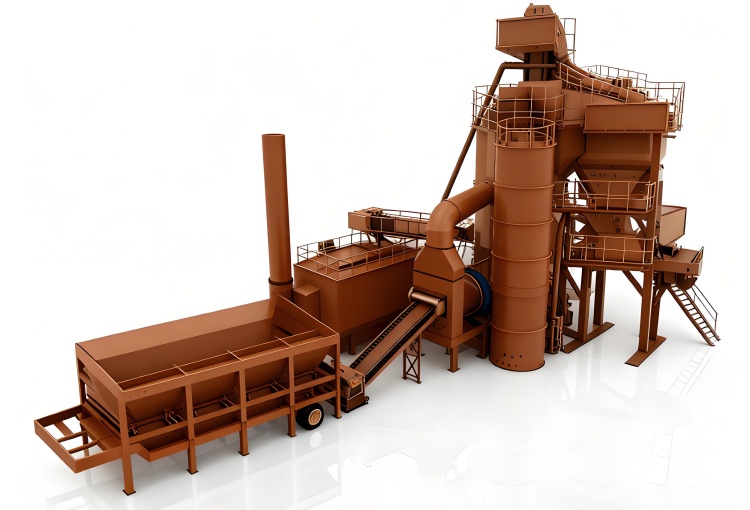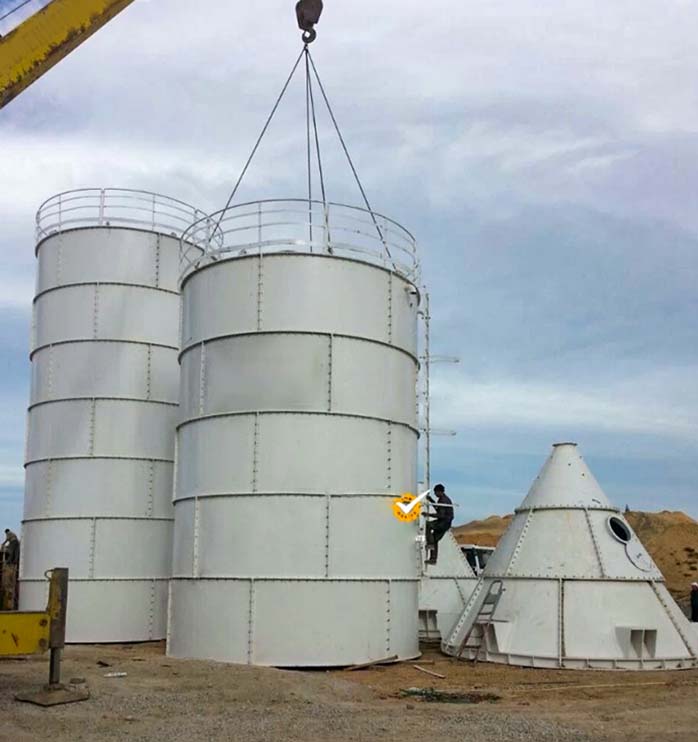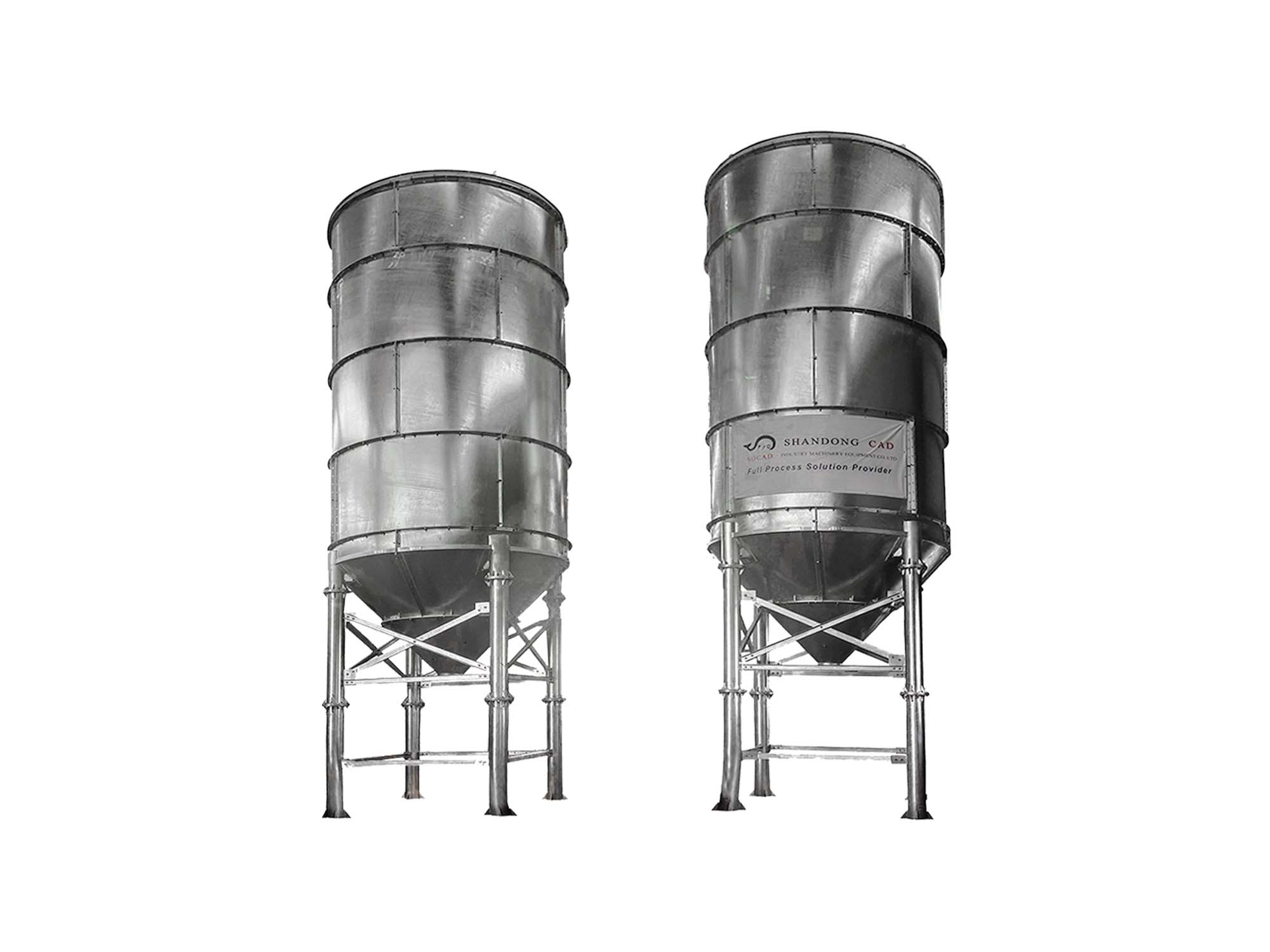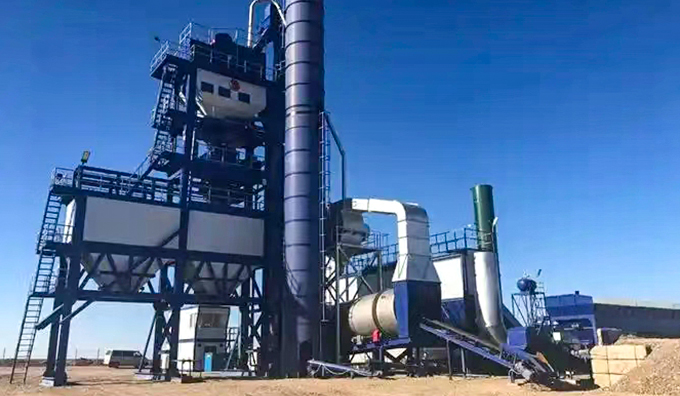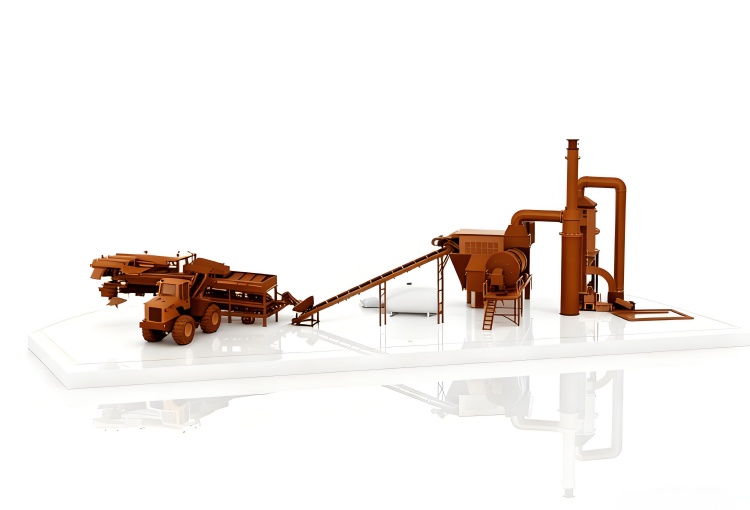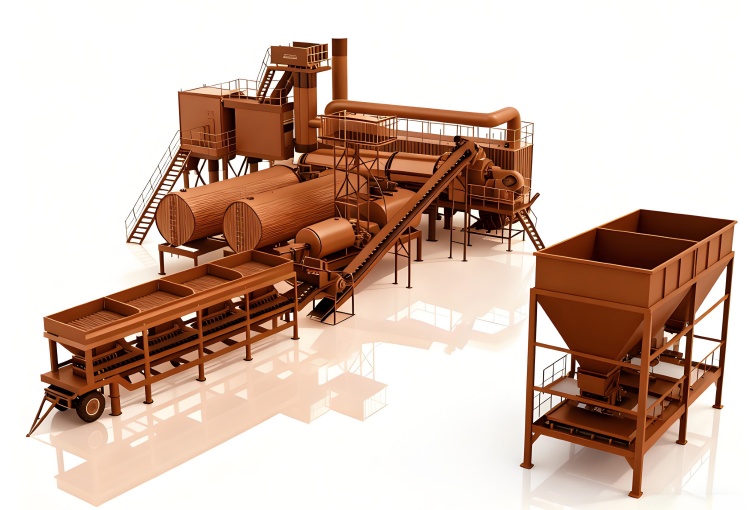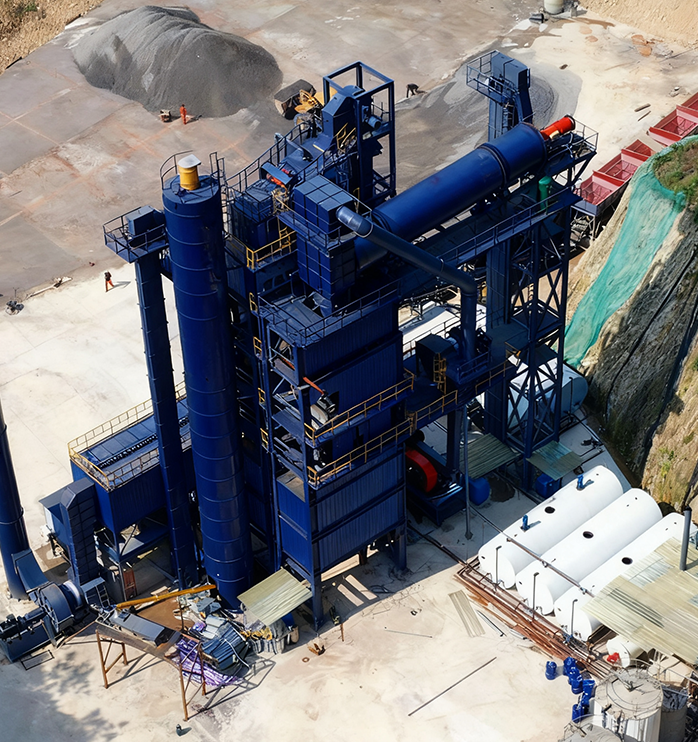Operating a concrete batching plant is much more than simply mixing cement, aggregates, and water—it requires meticulous planning, precise execution, and continuous monitoring. Every cubic meter of concrete produced impacts project quality, profitability, and customer satisfaction.
Interestingly, even mobile concrete batching plants with lower output can outperform stationary units if operations are optimized, calibration is precise, and every component functions harmoniously. This guide provides a component-level, step-by-step framework for managing a concrete plant efficiently, safely, and profitably.
1. Understanding Key Components of a Concrete Plant
Before operation, it is critical to understand the main concrete plant components, their function, and potential operational challenges.
A. Mixers
-
Types: Twin-shaft, planetary, and drum mixers.
-
Function: Homogeneously combine cement, aggregates, water, and admixtures.
-
Operational Attention:
-
Ensure proper leveling to prevent vibration and wear.
-
Check mixing blades and shaft alignment before every shift.
-
Lubricate bearings and monitor motor temperature.
-
Common Issues:
B. Aggregate Bins & Hoppers
C. Conveyors & Feed Systems
D. Cement and Fly Ash Silos
E. Weighing and Dosing Systems
F. Control Panel & Automation Software
G. Discharge & Loading System
Note: Incorporating these component-level inspections into a daily checklist significantly reduces unplanned downtime and improves batch consistency.
2. Pre-Operation: Preparing for Production
A. Safety and Site Readiness
-
PPE: Helmet, gloves, boots, dust mask.
-
Clear walkways and remove tripping hazards.
-
Confirm emergency exits and fire extinguishers.
B. Equipment Startup
-
Switch on main power and check all motors.
-
Verify mixers rotate correctly and conveyors move smoothly.
-
Test control panel for alarms, sensor readings, and automatic batching functions.
-
Run a dry test batch to ensure all components communicate correctly.
C. Material Verification
-
Check aggregate moisture content, size, and cleanliness.
-
Confirm cement and admixture levels in silos.
-
Measure water supply and verify quality.
-
Adjust dosing based on seasonal or weather-related changes.
Scenario: In Malaysia, a mobile concrete batching plant faced slump inconsistencies due to rainy weather. Adjusting water content and using moisture sensors helped achieve uniformity.
3. Operation: Step-by-Step Guide
A. Material Batching
-
Load aggregates according to the mix design using ready mix concrete plant layout.
-
Measure cement and admixtures via silos and weighing systems.
-
Water dosage controlled automatically via calibrated pumps.
Tips for Consistency:
-
Verify scales are accurate every hour.
-
Use automation alerts to detect material feed anomalies.
-
For mini or mobile plants, schedule smaller batches to reduce errors.
B. Mixing Process
-
Use correct mixer type:
-
Mix for recommended durations to avoid segregation.
-
Observe mix color and texture—uneven color may indicate poor ingredient distribution.
-
Record all batch parameters digitally.
C. Loading & Dispatch
-
Coordinate truck dispatch to minimize wait times.
-
Clean truck drums before loading.
-
Stagger batch release to avoid mixer downtime.
-
Monitor slump and adjust water as needed during loading.
D. Mid-Operation Checks
-
Inspect mixers, belts, and gates every 2–3 hours.
-
Watch for unusual vibrations, noise, or overheating.
-
Document batch deviations and corrective actions.
4. Common Operational Issues and Component-Specific Solutions
| Component |
Issue |
Cause |
Solution |
| Mixer |
Uneven mix |
Blade wear / improper paddle alignment |
Inspect and replace blades; recalibrate shaft |
| Aggregate bin |
Bridging / moisture |
Wet aggregates |
Vibration, moisture adjustment, sieving |
| Conveyor |
Belt slippage |
Misalignment or overload |
Adjust belt tension, check motor |
| Silo |
Caking |
Humidity / residual cement |
Air rakes, compressed air cleaning |
| Weighing system |
Batch deviation |
Calibration drift |
Recalibrate scales, manual cross-check |
| Control panel |
Alarm faults |
Sensor or software glitch |
Restart software, check sensor wiring |
| Discharge system |
Blockage / spillage |
Material buildup |
Clean chute, adjust gate timing |
Pro Tip: Daily digital log review can reveal recurring issues before they escalate into production halts.
5. Efficiency and Safety Best Practices
-
Rotate operators to prevent fatigue.
-
Implement predictive maintenance using sensor data.
-
Use proper lighting and ventilation.
-
Conduct weekly mini-trainings for safety and troubleshooting.
-
Plan for material delays, power outages, or emergency shutdowns.
Interesting Insight: Operators using detailed component-level checklists reported a 15% increase in concrete mixing plant efficiency and reduced maintenance costs by 20%.
6. Post-Operation: Shutting Down and Cleaning
After production, proper shutdown and cleaning are essential to maintain efficiency, safety, and component longevity.
A. Mixer Cleaning
B. Aggregate Bins & Conveyors
-
Remove any leftover aggregates.
-
Inspect for bridging or moisture accumulation.
-
Conveyors should be wiped down and rollers checked for debris.
C. Cement/Fly Ash Silos
-
Close inlet and outlet gates to prevent moisture intrusion.
-
Clean filters to avoid dust buildup.
-
Verify that screw conveyors and rotary feeders are free of residue.
D. Water & Admixture Systems
Scenario: At a mobile concrete batching plant near me, skipping daily mixer cleaning led to 10% production inefficiency due to hardened deposits.
7. Maintenance: Preventive & Scheduled
Regular maintenance prevents unplanned downtime and extends the plant’s lifespan.
A. Daily Maintenance
-
Check lubrication points on mixer shafts and bearings.
-
Inspect belts, pulleys, and rollers for wear.
-
Test alarms and sensors on the control panel.
-
Verify calibration of weighing systems with sample batches.
B. Weekly Maintenance
-
Inspect discharge chutes for wear.
-
Check aggregate bin vibration motors.
-
Test emergency stop mechanisms.
-
Clean dust collection systems thoroughly.
C. Monthly Maintenance
-
Complete calibration of all dosing systems.
-
Inspect mixer paddles for wear or cracks.
-
Check all electrical wiring and control panel connections.
-
Evaluate conveyor alignment and tension.
D. Predictive Maintenance
-
Utilize concrete batch plant software to monitor motor load, vibration, and temperature.
-
Identify anomalies early and replace parts proactively.
Tip: Well-maintained concrete batching plants can reduce operator errors and extend service life of mixers and conveyors by 30–40%.
8. Troubleshooting Common Issues
| Symptom |
Likely Component |
Recommended Action |
| Mixer vibration |
Shaft misalignment |
Adjust shaft alignment; inspect bearings |
| Uneven concrete slump |
Weighing system drift |
Recalibrate scales; check sensor readings |
| Belt slippage |
Conveyor |
Adjust tension; inspect motor and rollers |
| Cement caking in silo |
High humidity |
Use rotary rake; check air filters |
| Control panel alarm |
Sensor failure |
Replace or recalibrate sensor; reboot software |
| Admixture pump blockage |
Dosing system |
Flush lines; check chemical viscosity |
Pro Tip: Document every incident in the digital log for pattern recognition and continuous improvement.
9. Efficiency Optimization Strategies
To maximize output while maintaining quality:
-
Batch Size Management
-
Automated Monitoring
-
Sensors for moisture, slump, and aggregate temperature ensure precise adjustment.
-
Integrate with concrete batch plant software for real-time analysis.
-
Workflow Scheduling
-
Resource Optimization
-
Operator Rotation
10. Safety Best Practices
Safety is as critical as production efficiency:
-
PPE Compliance: Gloves, helmet, boots, dust masks mandatory.
-
Emergency Systems: Ensure fire extinguishers, first aid kits, and emergency stops are functional.
-
Chemical Handling: Cement, fly ash, and admixtures require training and MSDS awareness.
-
Lockout-Tagout Procedures: During maintenance or part replacement, isolate energy sources to prevent accidents.
-
Spill Prevention: Keep walkways dry and clean; prevent concrete overflows on the floor.
Interesting Insight: Plants implementing component-specific safety checklists observed a 25% reduction in minor injuries and improved operational confidence.
11. Advanced Tips for High-Value Operation
-
Component-Level Monitoring: Track mixer wear, silo condition, and conveyor alignment using sensors.
-
Digital Batch History: Analyze previous batches for optimization of water-cement ratio and slump.
-
Emergency Scenario Planning: Prepare backup power, spare parts, and temporary storage for high-demand periods.
-
Mobile Plant Optimization: Reassess ready mix concrete plant layout at each site for efficiency.
-
Cross-Training Operators: Increases flexibility for unexpected absenteeism or high workload.
Example: One concrete batching plant in India reduced downtime by 18% after implementing component-specific predictive maintenance schedules combined with operator cross-training.
12. Conclusion
Managing a concrete batching plant effectively requires attention to every component and a systematic approach covering pre-operation, operation, post-operation, and maintenance. By combining detailed inspections, preventive maintenance, real-time monitoring, and operator training:
-
Concrete quality remains consistent.
-
Operational costs are optimized.
-
Safety and efficiency are significantly improved.
High-value, detailed operational management transforms a concrete batching plant from a standard production site into a strategic asset for construction projects. Mobile and mini plants also benefit from these strategies, proving that careful management outweighs mere plant size.
Key Takeaway: Investing in component-level understanding, proper calibration, and predictive maintenance not only reduces downtime but ensures the plant consistently meets project demands and client expectations.

